If you love being on the water and enjoy photography or filmmaking, then you need an excellent lake boat. A lake boat allows you to get up close and personal with the natural world, providing endless opportunities for stunning photos and videos.
But with so many different types of boats on the market, it can be hard to know which one is right for you.
In this article, we’ll look at some of the best lake boats for photography and filming, so you can find the perfect one for your needs.
The best lake boats for photography and filming
Pontoon Boats
Pontoon boats are an excellent choice for photography and filming due to their stability on the water. The generous deck space and the multiple pontoons used to float the boat make them incredibly stable compared to traditional V-hull boats. This is ideal for photography and filming, as it allows photographers to move freely around the boat without worrying about rocking or tipping over. Additionally, pontoon boats provide a great platform for larger cameras, tripods, and other equipment needed to capture the perfect shot. With a pontoon boat, photographers and filmmakers can quickly move around the boat and capture footage from different angles. The stability of a pontoon boat also makes them ideal for engaging in activities such as fishing or swimming, which can be captured on camera for more exciting content.
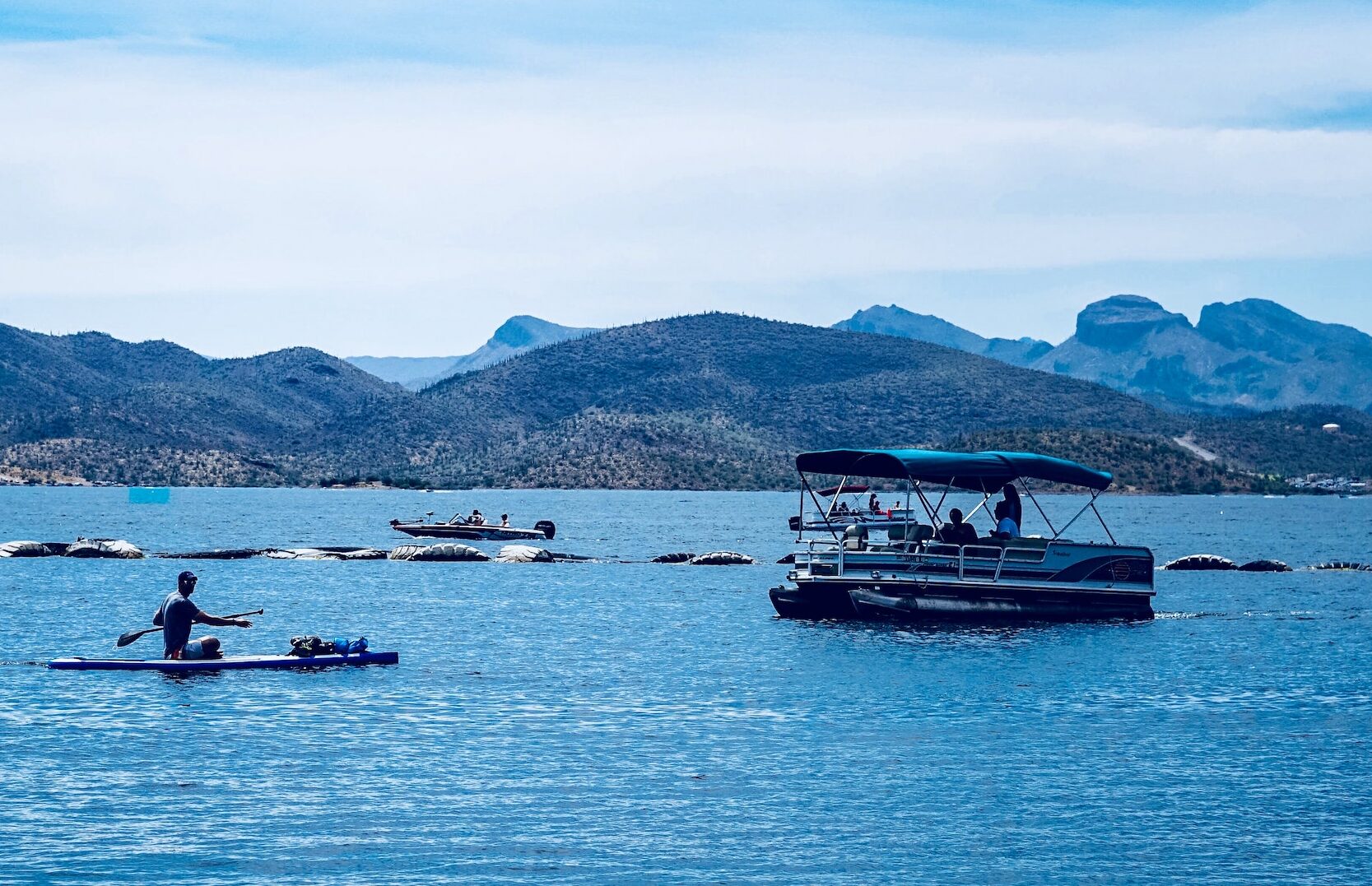
Kayaks and Canoes
Kayaks and Canoes are excellent for photography and filming due to their quietness and shallow draft, which enable photographers to get close to their subjects and access places inaccessible by foot. Kayaks sit low in the water and are suitable for almost any aquatic environment, from ponds and lakes to offshore swells. This puts the photographer at eye level with the birds and allows for hand-held shooting or using a camera bag on the deck to support a lens. Canoes sit higher in the water, are better suited for lakes and swamps, and offer more stability for setting up a tripod. Photographers should be aware, however, that camouflage generally doesn’t fool birds, so they should paddle slowly and keep the blades of the paddle low to the water to avoid spooking them. Motorized boats are also an option, but kayaks and canoes provide the most intimacy with nature while photographing and filming.

Center Console Boats
Center Console boats are ideal for lake photography due to their size, stability, and quietness. Their aluminum hulls and outboard motors can quickly get into tight spaces with a few feet of water. Additionally, they sit moderately low on the water, providing a lower point of view, perfect for landscapes and birds wading. The boat’s stability also allows photographers to stand up, giving them a higher point of view to capture birds perched in trees or nesting on treetops. The boats are also relatively quiet, allowing photographers to get close to their subjects without causing any stress. Furthermore, they can quickly cover a large area, allowing photographers to move to multiple locations if needed.
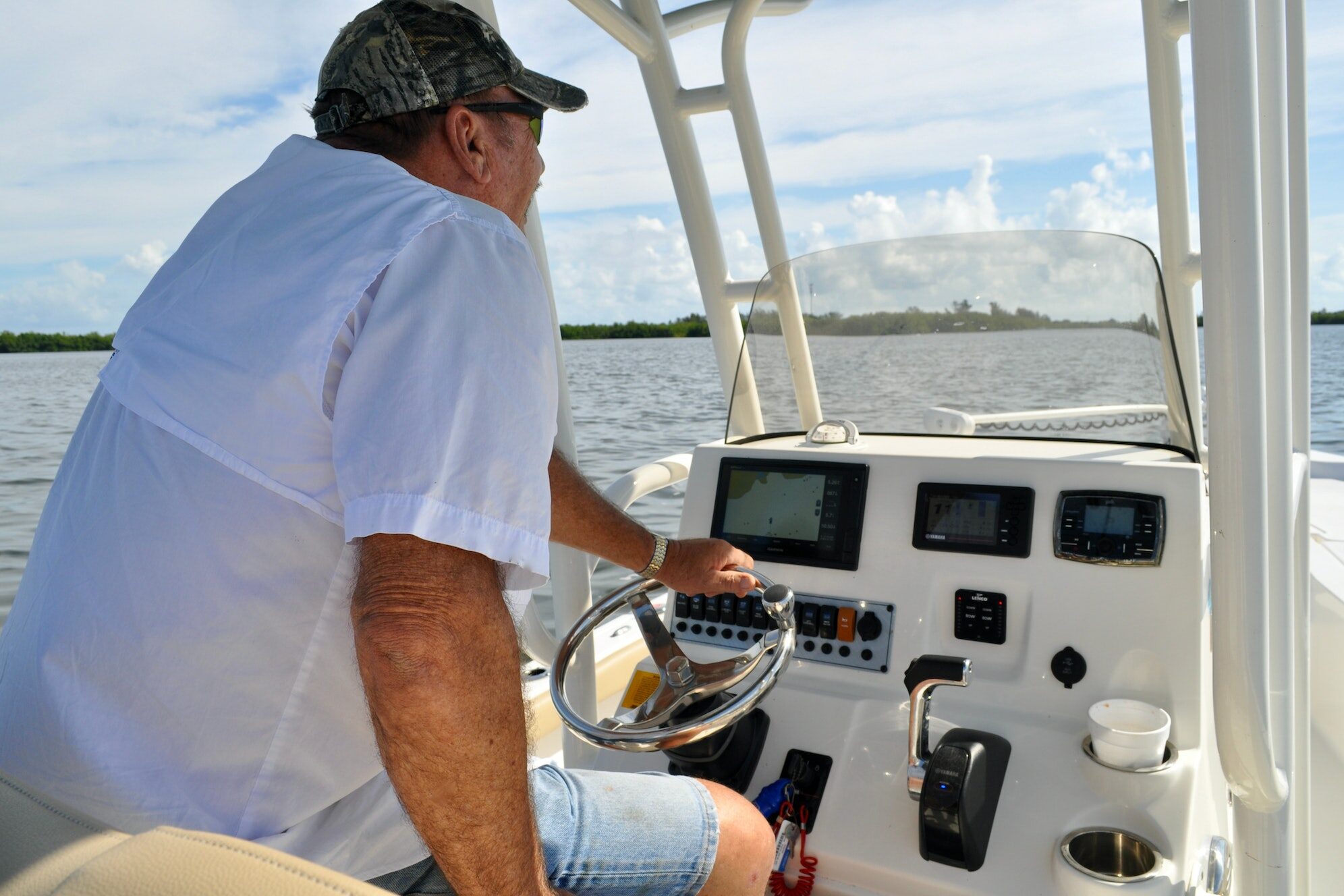
Bowriders
Bowriders are an excellent option for photography and filming due to their open layouts and versatility. With a bowrider, photographers, and videographers can move around the boat to capture the desired shots from different angles. Additionally, these boats provide excellent stability and smoothness in the water, which is ideal for capturing clear, sharp images. The large decks of bowriders also make it easy to move equipment around and set up tripods and other camera gear. Finally, the ample seating in a bowrider can accommodate a larger crew and make it easier to get the perfect shot. With a bowrider, photographers, and filmmakers can enjoy a spacious platform for their work while also having fun on the water.
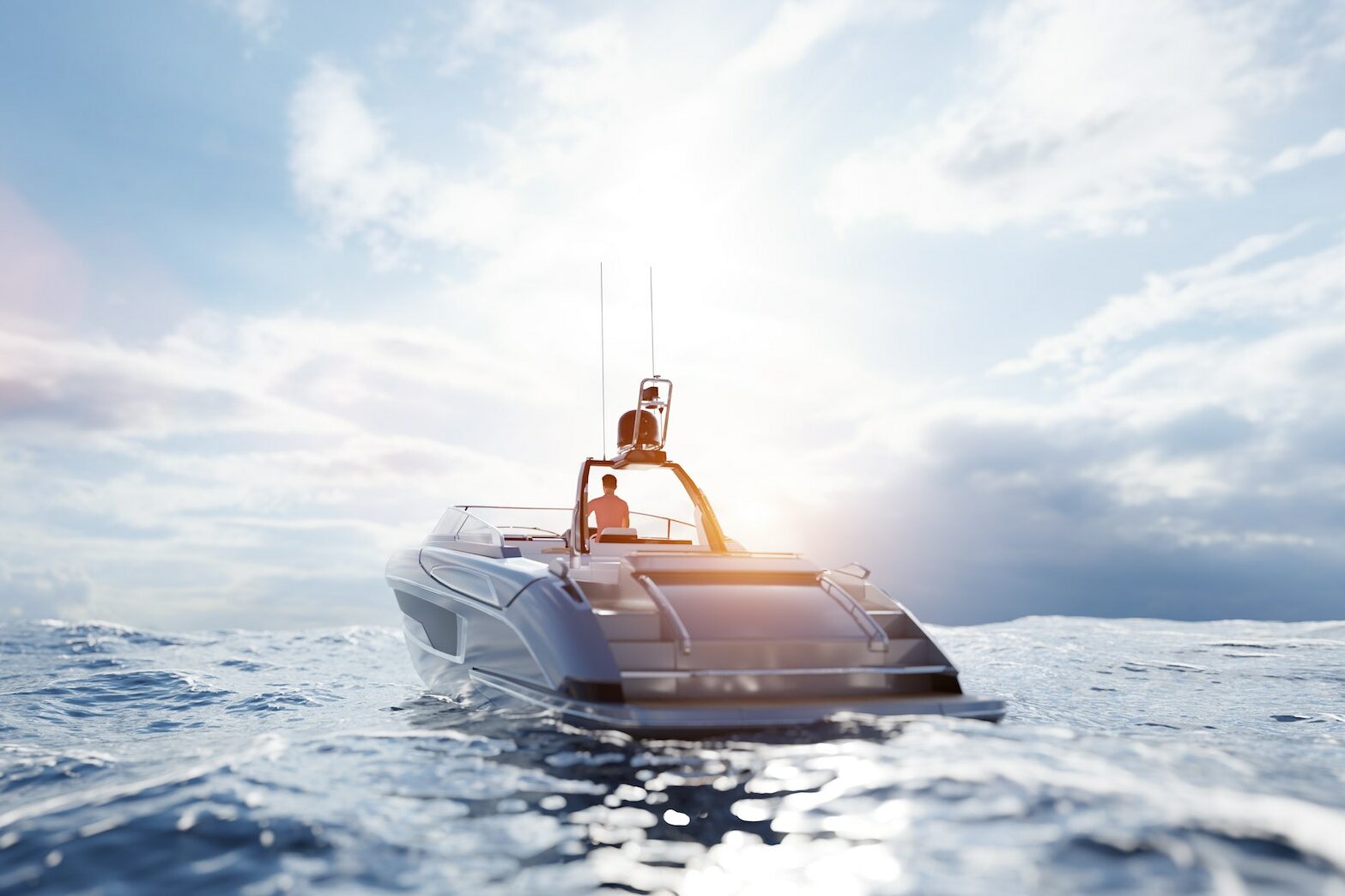
Sailboats
Sailboats are ideal for photography and filming due to their stunning visuals and dynamic movements. The sails of the boats provide movement and an excellent opportunity to capture some stunning shots, while the lack of wind allows for still waters and better-defined reflections, ideal for photographing boats at rest. Additionally, you can capture beautiful, full-length portraits of boats at rest or racing in open waters, as well as close-up details of wood trim, stainless winches, folds of the canvas, and the curve of a bow. If you want to capture the big picture, shooting from a high angle, like a bridge or a helicopter, is recommended. If shooting boat-to-boat, be aware of your surroundings, and if possible, try to keep the boat clean to avoid post-capture editing time. Finally, be ready to capture those decisive moments and ensure your camera is charged and ready to go!
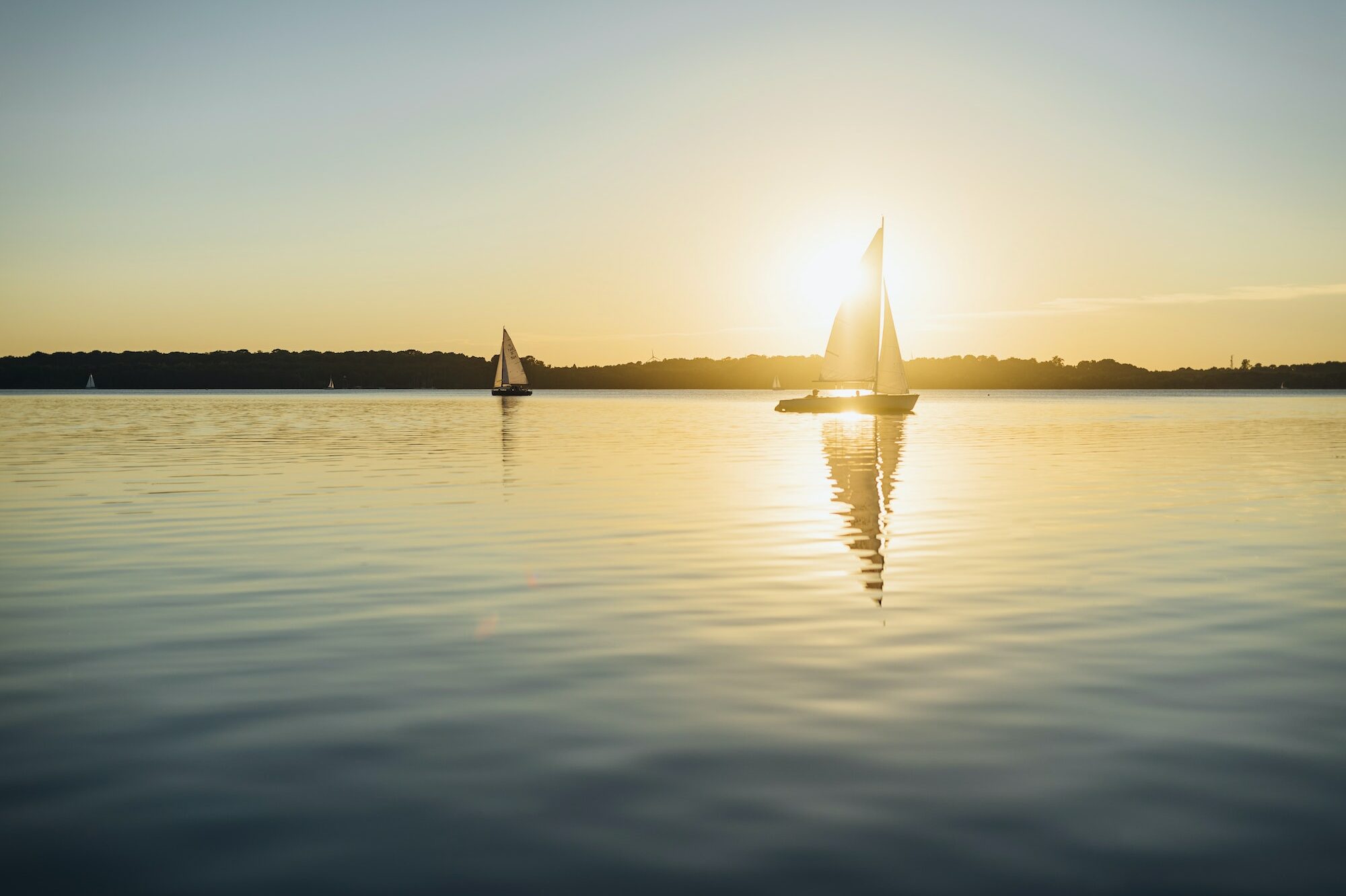
What to consider when buying a lake boat for photography?
stability
Stability is vital when choosing a lake boat for photography. The camera and lens are in constant motion when shooting from a boat. This can lead to blurry or out-of-focus images, especially at slower shutter speeds. A stable boat ensures the camera and lens remain still for sharp images. It is also essential for the physical safety of the photographer, who needs to be able to move around and balance to get the desired shots. Boats with features such as a flat bottom and a wide beam provide the most stability and are, therefore, ideal for photography.
Maneuverability
Maneuverability is the ability of a boat to navigate in tight spaces and turns and is an essential factor to consider when choosing a boat for lake photography. A maneuverable boat will allow you to access areas that are otherwise inaccessible or difficult to reach. This is especially important for lake photography, where you may need to access tight spaces, such as around islands, or to approach wildlife or landscapes from different angles. The ability to turn quickly and accurately, without the risk of capsizing or running aground, is critical to getting the shots you want. A canoe or kayak may be ideal for maneuverability, as they are designed to be lightweight and responsive. Motorboats, on the other hand, are typically more challenging to maneuver in tight spaces. However, they are great for covering large distances quickly and easily. The right boat for lake photography will ultimately depend on your specific needs.
Features
When buying a boat for lake photography, there are a few key features to consider:
- You should think about the size of the boat, how much room you need for equipment, and the boat’s maneuverability when navigating the lake.
- You should consider the type of boat that is best suited for lake photography, depending on the type of photos you want to take.
- You should look into the boat’s safety features, such as life jackets, emergency kits, navigation lights, and other safety equipment.
- You should consider the boat’s power, such as the horsepower and the speed you will need for the type of photos you want to take.
With these considerations in mind, you should be able to find the perfect boat for lake photography.
Storage
When buying a lake boat for photography, storage is an essential factor to consider. A boat with ample storage space can provide the photographer with room to carry the necessary camera gear needed for the job. It can also provide a place to store food and water, as well as spare clothing and accessories that can be helpful when dealing with the elements. Additionally, storage can also help to protect equipment from the elements, such as water, dirt, and salt air. Finally, it can offer a convenient place to store any leftover gear after the shoot is done, making it easier to transport back to the photographer’s home or studio.
Accessibility
When buying a boat for nature photography, accessibility is an essential factor to consider. The ability to get into areas with shallow water is necessary for navigating waterways and photographing wildlife in their natural habitat. Quietness is also essential for photographing wildlife, especially when the boat is close to the shore. Additionally, it’s essential to be able to angle the boat so that it’s low for some subjects and high for others to get the best possible shot. The stability of the boat is also important to consider so that you don’t fall in. It’s also important that the boat is able to transport easily to the shooting location, as well as having the ability to operate the boat while taking pictures.
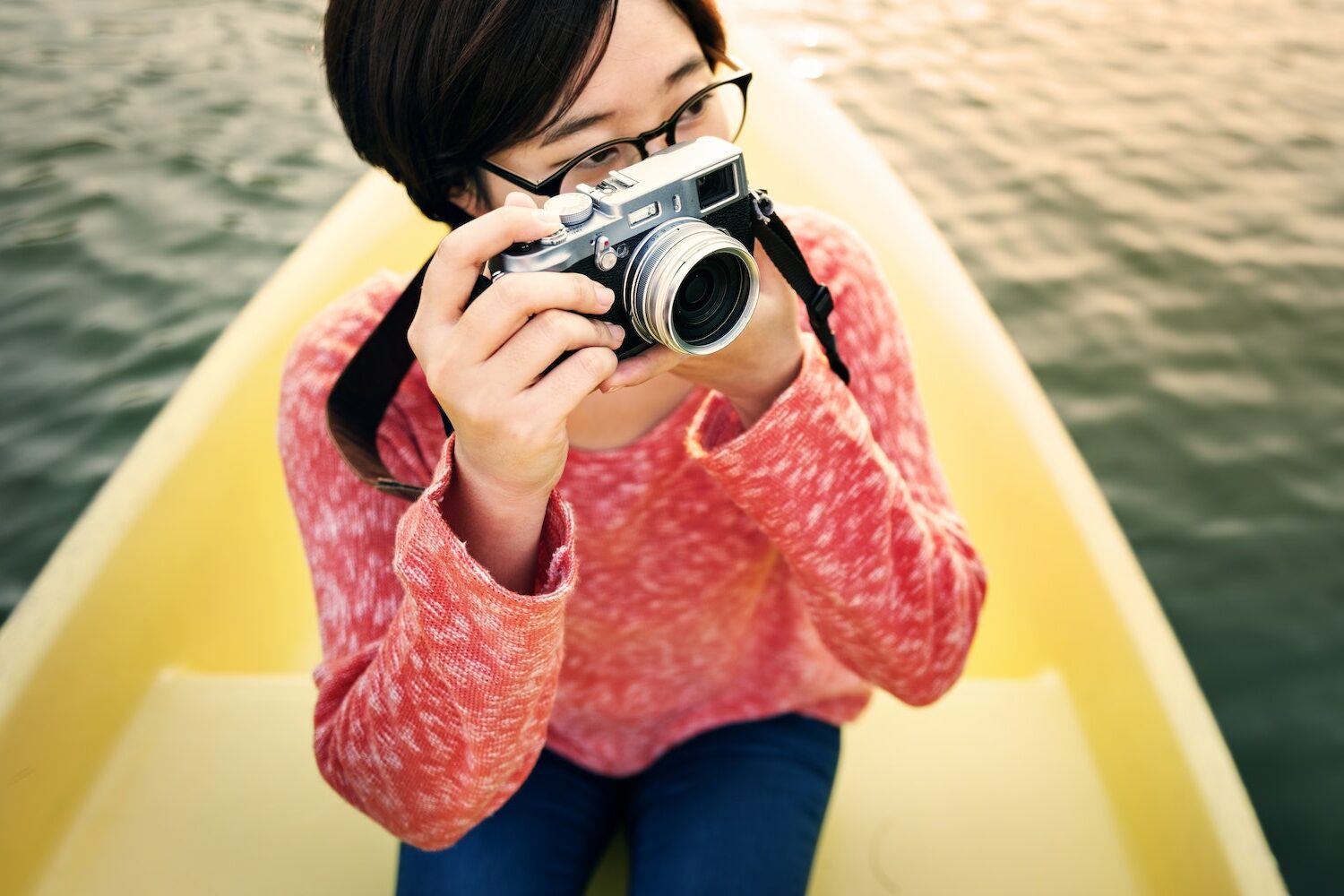
FAQ
What kind of photography can I do with a lake boat?
Photographing with a lake boat can open up a variety of opportunities for capturing stunning images of nature. With a lake boat, photographers can access locations that would otherwise be inaccessible. From vast expanses of open water to secluded bayous, a lake boat can provide a perfect platform to capture stunning shots of wildlife and landscapes. Additionally, a lake boat can photograph the boat dockside, providing the perfect angle for an overhead shot. For those looking for even more of an aerial view, a lake boat can also be used to capture aerial shots from a higher angle. Finally, lake boats are excellent for capturing stills from a drone or pulling 8MB stills from 4K video.
What type of lens should I use for lake boat photography?
When it comes to boat photography, the ideal lens depends on the camera-to-boat distance, the type of boat, and the photographer’s desired effect. For shots of a boat at rest, fixed focal length lenses are suitable and are best used to render the lines of the boat realistically. For shots of a boat underway, a zoom lens offers more flexibility and can help maintain a balance between boat, water, and sky. For close-ups, macro lenses can capture details like chipped or peeling paint, textures, colors, and more. When shooting from a small boat, lightweight lenses like the Canon 400mm f/4 DO IS II or the Nikon 500mm f/5.6 PF lens allow for greater maneuverability and offer an array of focal lengths for photographers to choose from.
What type of kayak is best for wildlife photography?
Whatever type of kayak is chosen, it is important to consider the type of water that will be navigated and any local regulations that may apply. When choosing a kayak for wildlife photography, the best option for two people is a 12-foot sit-on-top kayak. This type of kayak is considered a good compromise between maneuverability and tracking, as it is easier to turn than a kayak of 14+ feet but can still hold a straight line when on the water. Kayaks of 10 feet or less are better for maneuvering in tight areas but require more user input when paddling and tend to drive off course more easily. Additionally, two 10-foot kayaks would allow the photographer and their partner to both easily go out on the water together.
What is the best type of boat for taking sunset photos?
The best type of boat for taking sunset photos is one that gives you a stable camera platform and lets you get close to your subject. Boat-to-boat, chase boats, and helicopters provide a great platform for capturing beautiful sunset shots of boats. However, if you want a more economical approach or don’t require a large-scale platform, you could consider a Perogue, Kayak, or Canoe. The Perogue and Kayak are both relatively lightweight and easy to transport, with the added advantage of a shallow draft and the ability to move quickly to a new location. The Canoe is heavier than either of the other two options, but it is also more stable and can carry larger items such as photography equipment. All three are quiet and provide a peaceful ride as you take in the views and capture the perfect sunset shot.
How do I keep my camera safe on a boat?
Planning and preparing for lack of space is essential when taking a camera onto a boat. To make the most out of the limited space available, try cutting down your camera kit and using extra padding or waterproof protection for assurance. Additionally, you should tie your bag securely with straps or bungee cords and wear a camera strap around your neck for added security. Furthermore, attach the camera to your body with a secondary rope if you plan to climb masts. To protect your photography equipment from the weather, consider using a dry bag or a waterproof cover, and keep sun cream and sunglasses handy, along with a tub of Vaseline and wool thermals. Finally, do a wind chill calculation before your voyage to determine the weather conditions you may face at sea. Following these steps will help ensure your trip is memorable for your images and not for any mishaps.
What type of shutter speed should I use for boat photography?
When it comes to boat photography, the type of shutter speed you should use depends on the situation. If you’re shooting in broad daylight and are looking to freeze the action, particularly when using a telephoto lens or capturing fast-moving boats, then a faster shutter speed is best. On the other hand, if you’re shooting in lower light levels, such as at sunrise or sunset, then you may want to use a slower shutter speed (1/15, 1/8, or 1/4 of a second) and turn on the camera’s image stabilization system in order to keep the boat in focus and blur the water.
When shooting from a boat, you’re always moving, so using a higher ISO than usual is recommended to keep your shutter speed high and freeze the action. Keep in mind that choosing a slower shutter speed can also provide a sense of motion and emotion to your pictures, so be creative and look for situations where motion blur can benefit you.
The type of lens you should use when photographing a boat also has an effect on the shutter speed. For example, a fixed focal length lens is perfectly fine if the boat rests. But if the boat is in motion, a zoom lens is preferable as it allows you to maintain a balance between the boat, water, and sky.
Ultimately, it’s important to consider the type of lighting, lens, and speed of the boat when deciding what shutter speed to use for boat photography.
What type of tripod works best for boat photography?
When it comes to boat photography, the best type of tripod to use is one that can effectively dampen out the motion of the boat. A traditional tripod may not be the best option, as it will transfer the boat’s motion directly to your camera, resulting in a softer image. Alternatives, such as a monopod or using the human body to absorb the boat’s motion, can be more effective. A monopod is particularly useful for heavier lenses, as it can help to take the weight off the arms and shoulders between shots. Additionally, standing up in the boat can help absorb the boat’s motion. However, this needs to be done safely and without ruining the view of fellow passengers. Ultimately, the type of tripod that works best for boat photography depends on the individual situation and should be chosen accordingly.

